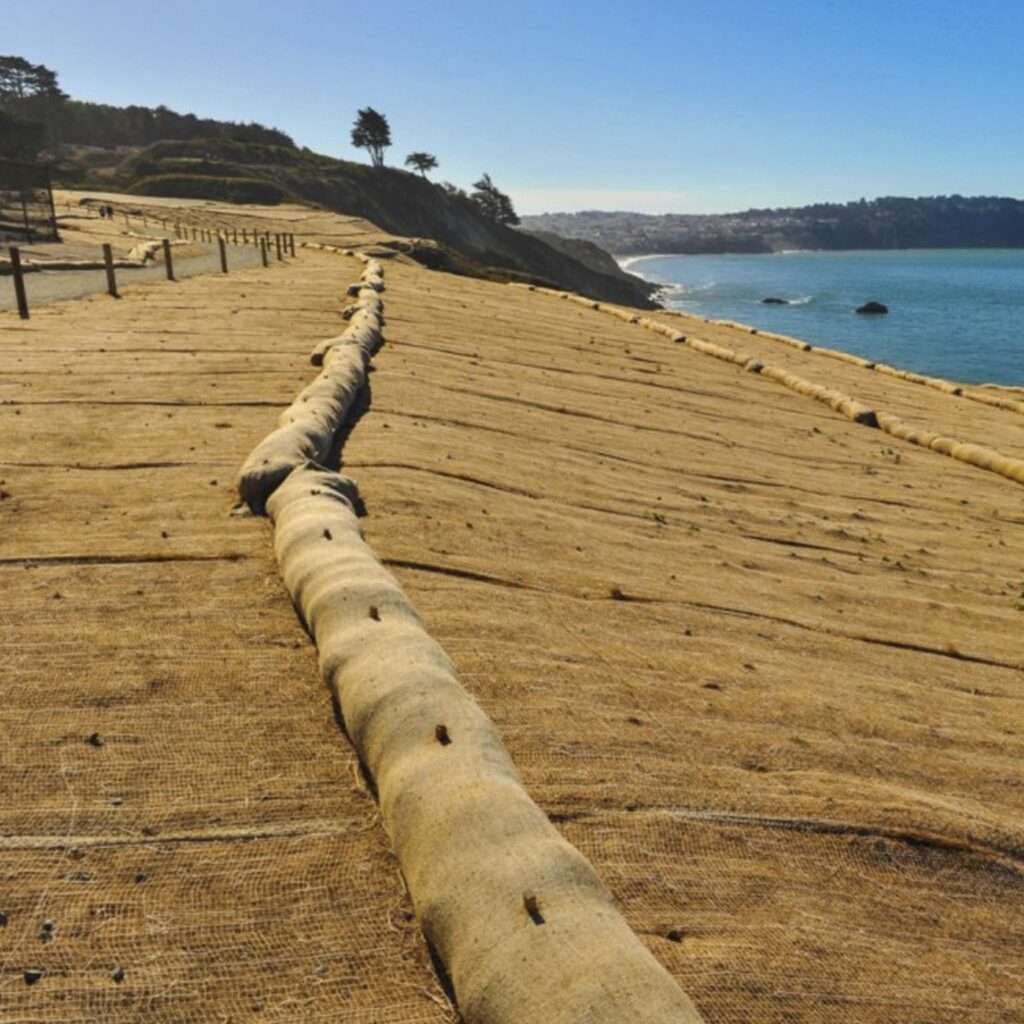Green Defense: How Coir Logs Combat Erosion
Coir logs are gaining recognition as effective tools for combating erosion. They are created from coconut coir fiber which are extracted from the outer husk of coconuts and provide a biodegradable solution to controlling erosion in a range of settings, such as construction zones, rehabilitation zones, and coastal zones. This article will explore how coir logs and coir rolls work, their benefits, and the best practices for their installation and maintenance in combating erosion.
What Are Coir Logs?
Coir logs are cylindrical structures made from compressed coconut fibers. These are usually accompanied by coir twine, forming an elastic shield against erosion. They can be in various lengths and diameters and they can extend up to 20 feet long in length. This makes them to be very fit for aesthetic and practical use since their natural makeup allows for integration into the environment.
Coir logs serve multiple purposes, such as stabilizing slopes, protecting shorelines, and promoting vegetation growth. This makes them disintegrate in the long run with the added advantage of adding nutrients to the soils without polluting the environment. This makes them a reliable option for any environmentally sensitive work such as landscaping and erosion control.
Benefits of Coir Logs for Erosion Control
Effective Erosion Control
Coir logs act as barriers to dissipate the energy of waves and heavy rainfall. If well installed, they will go a long way in preventing soil erosion on slopes and coastal regions. It reduces the rate of water flow preventing soil erosion since the logs trap sediments, enabling them to deposit upon the water surface. This is especially so if the area is liable to heavy rains or tidal washes, for example, along the coastline.
Encouragement of vegetation growth
Coir logs provide an excellent foundation for new plant growth. When seeded soil is applied on the top of the logs, it helps in vegetation establishment. These plants also develop their roots and, in doing so, add another layer of security against soil erosion. The other benefit of plants is that they help the general health of the ecosystem by making soil and carrying nutrients.
Biodegradability and Environmental Benefits
One of the significant advantages of coir logs is their natural composition. Unlike plastic or synthetic erosion control solutions, coir logs break down over time, returning organic matter to the soil. This process helps to improve the fertility of the soil for the proper growth of plants and healthy yields. In addition, operating within the guidelines of sustainable gardening, they help to protect the environment.
Cost-Effective Solution
Coir logs are often more affordable than traditional erosion control methods. They have a long life span of two to five years; thus, making it cheaper to use for most projects. Since they can be reused and do not require frequent replacement, coir logs offer significant savings over time.
Flexibility in Application
Coir logs can be used in diverse settings, including construction sites, agricultural fields, and coastal regions. They are ideal for use in the following applications; slope stabilization, shoreline protection, and sediment control. This versatility of the material makes them ideal for use in different locations for erosion control.
Installation of Coir Logs
Installing coir logs requires careful planning and execution to ensure their effectiveness. Here are the steps for proper installation:
- Site Assessment: The first step before installation is to evaluate the site for the risk of erosion in that particular area. Determine where coir logs will be most effective.
- Preparation: Remove all the obstructions in the installation area, including rocks, branches and other materials. This ensures that coir logs can sit on the soil surface .they do not have to be buried.
- Trenching: Excavate a slit that equals the length of the coir log and that has adequate depth to allow the coir log to bury at least two-thirds of its body length. This will lock the log and offer stability.
- Placement: Place the coir log inside the trench in the right orientation, where it is needed.
- Securing: One must use biodegradable stakes in order to secure the log-in position. The stakes should be placed approximately 2 to 3 feet apart on the downslope side to help secure the log.
- Soil Filling: Fill the trench above the coir log with soil, and make sure it is well compacted on the ground. This will also improve the stability and effectiveness of the intervention further.
- Vegetation Planting: If so wished, place seeded soil on the non-water side of the coir log to enhance plant growth. Once they are growing, plants create their own ‘anchors’ and, therefore can help prevent erosion.
Maintenance and Monitoring
After installation, ongoing monitoring and maintenance are crucial to ensure the effectiveness of coir logs. Regular inspections should be conducted to check for any signs of wear or degradation in the logs. Any materials covering the logs, such as dirt or debris, should be cleared away, as they can hinder water flow through the structure.
Once plants are established, they must be well cared for to ensure optimum growth. A well-maintained plant system will enhance the effectiveness of the coir logs in erosion control.
Conclusion
Coir logs present a sustainable and effective solution for combating erosion in various environments. Organic, inexpensive, and effective in stimulating plant cover, fertilizers are considered to be useful for environmental protection. By following proper installation and maintenance practices, coir logs can significantly reduce erosion and enhance the health of ecosystems. As we continue to seek sustainable solutions for environmental challenges, coir logs, including coir rolls, offer a practical and effective approach to erosion management.





 +94 (0) 31 228 1114
+94 (0) 31 228 1114 
